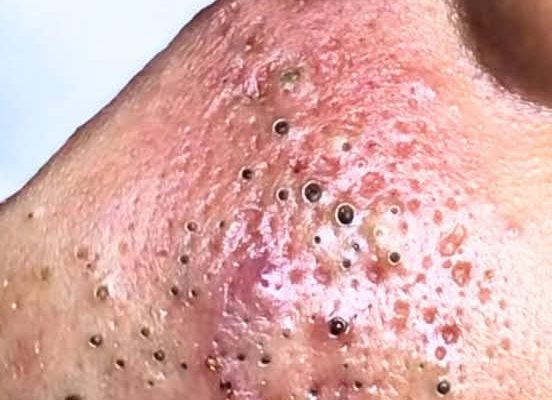For decades, acne has been misunderstood, mistreated, and emotionally burdensome for millions. Once dismissed as a passing teenage phase, acne is now recognized as a chronic medical condition that can persist well into adulthood—and effective treatment is no longer limited to harsh creams or outdated myths.
Thanks to scientific research, technological innovation, and a better understanding of skin biology, acne treatment in 2025 is smarter, more personalized, and increasingly focused on holistic wellness. But the path to clear skin still requires education, patience, and a multi-pronged approach.
Understanding Acne Before Treating It
Acne is caused by a complex mix of:
-
Excess sebum (oil) production
-
Clogged pores from dead skin cells
-
Bacterial growth, particularly Cutibacterium acnes
-
Inflammatory responses
-
Hormonal fluctuations
It can appear as:
-
Comedones (blackheads/whiteheads)
-
Papules and pustules (inflamed pimples)
-
Nodules and cysts (deep, painful lumps that may scar)
Severity varies greatly—and so does the treatment strategy.
Step 1: Topical Treatments – The First Line of Defense
For mild to moderate acne, over-the-counter and prescription topicals are often the first step.
🔹 Benzoyl Peroxide
This antimicrobial powerhouse reduces acne-causing bacteria and unclogs pores. Available in concentrations from 2.5% to 10%, it’s often found in cleansers and spot treatments.
🔹 Topical Retinoids (Adapalene, Tretinoin, Tazarotene)
Retinoids regulate skin cell turnover, preventing clogged pores and reducing inflammation. Newer generations are more tolerable, reducing the irritation once commonly associated with their use.
🔹 Salicylic Acid
A beta hydroxy acid (BHA) that exfoliates inside the pores. Ideal for blackheads and whiteheads.
🔹 Azelaic Acid
Great for acne and post-acne pigmentation, azelaic acid is also safe during pregnancy and for sensitive skin types.
🔹 Topical Antibiotics (Clindamycin, Erythromycin)
Used to reduce bacterial inflammation—usually in combination with benzoyl peroxide to avoid resistance.
Step 2: Oral Medications – For Moderate to Severe Acne
When acne is widespread or unresponsive to topical treatments, dermatologists may prescribe oral therapies.
💊 Antibiotics (Doxycycline, Minocycline, Sarecycline)
These reduce bacteria and inflammation. However, due to concerns over antibiotic resistance, they’re used for limited periods and often paired with topical agents.
💊 Hormonal Treatments
-
Birth Control Pills: Certain formulations help regulate hormones linked to acne in women.
-
Spironolactone: An androgen blocker used off-label to treat hormonal acne, especially along the jawline.
💊 Isotretinoin (Accutane)
Reserved for severe, cystic, or treatment-resistant acne, isotretinoin is a powerful oral retinoid that can offer long-term remission. Side effects include dryness, mood changes, and birth defects, requiring close monitoring—but its effectiveness is unmatched.
Step 3: In-Office Procedures – Boosting Skin Recovery
In-clinic dermatology treatments can accelerate healing, reduce scars, and treat deep-seated acne.
🧪 Chemical Peels
Mild to moderate peels using salicylic or glycolic acid help exfoliate dead skin, reduce acne lesions, and improve pigmentation.
🔬 Laser & Light Therapy
-
Blue light therapy targets C. acnes bacteria.
-
IPL (Intense Pulsed Light) and Pulsed Dye Lasers reduce redness and inflammation.
-
Fractional lasers improve acne scarring and skin texture.
💉 Microneedling with Radiofrequency
This dual treatment helps reduce acne scars and stimulate collagen production.
💥 Cortisone Injections
Used for immediate relief of large, painful cysts—often before events or photoshoots.
Step 4: Lifestyle and Skincare Habits – Supporting Long-Term Success
Treatment isn’t just about prescriptions—it’s about daily routines and long-term skin health.
✅ Non-Comedogenic Products
Choose skincare and makeup labeled “non-comedogenic” to avoid clogging pores.
✅ Balanced Diet
Low-glycemic foods, reduced dairy, and antioxidant-rich fruits and vegetables may help control breakouts for some individuals.
✅ Stress Management
Chronic stress increases cortisol, which can worsen oil production and trigger acne flares.
✅ Consistent Routine
Stick with treatments for at least 6–8 weeks before expecting major changes. Acne treatment takes time—results aren’t instant.
Emerging Innovations in 2025
-
Probiotic Skincare: Topical products aimed at rebalancing the skin’s microbiome show promise for reducing inflammation.
-
AI-Powered Diagnosis: Apps now analyze photos and suggest treatment options, some even connecting users with board-certified dermatologists.
-
Targeted Therapies: Research continues into molecules that fight acne without contributing to antibiotic resistance or irritating the skin barrier.
-
Genetic Testing: New companies offer personalized acne plans based on genetic markers and skin profiles.
Mental Health and Acne: A Vital Part of Treatment
The psychological effects of acne are real. Many patients experience depression, anxiety, and social withdrawal due to persistent breakouts or scarring.
Today, more dermatologists are referring patients to therapists or providing emotional support alongside medical care. “Treating acne is not just about the skin—it’s about self-esteem, confidence, and mental wellness,” says Dr. Laila Monroe, a dermatologist based in Chicago.
Conclusion: From Stigma to Science
Acne is no longer a silent struggle. With proper education, access to treatment, and supportive care, it’s a manageable condition with multiple solutions.
In 2025, the message is clear: You don’t have to live with acne, and you don’t have to face it alone. Whether it’s a teenage breakout or adult flare-up, science has answers—and hope—for clearer skin.


